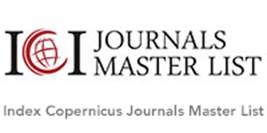EU’s Gender Equality Dilemma: A Human Rights or a Market Economy Instrument?
DOI:
https://doi.org/10.33831/jws.v20i2.82Keywords:
Turkey-EU relations, EU’s gender equality conditionality, norm diffusionAbstract
In the early stages of the European Integration, gender equality related policies were narrowly tackled due to the economic recovery priority of the Union. Although there was a rise of national and international women movements all around Europe, gender equality, particularly as a new paradigm, had not gained priority until the 1990s, when the EU was newly building a political presence in the world politics. Since the Copenhagen Criteria were presented in 1993, gender equality embedded titles have proven to be more promising as they are declared as a part of the EU’s human rights norms and the EU’s self-image towards ‘Others’. In a similar vein, specifically in that period the EU has contributed several international women conventions and has undertaken responsibilities in terms of promoting equality between men and women in its external relations. However, the explanations how a gender equality norm matters in the EU are yet unsatisfied due to the continuity of gender blind policies and strategies. This paper scrutinizes the content within which the EU has constructed gender equality norm inside its borders and then exported it as a Europeanization norm in its relations with Turkey. In light of the EU’s official documents and imposition of gender equality as an accession criterion, it can be argued that instead of creating an ideational change in the unequal conception of gender roles, the EU constantly instrumentalizes gender equality as a regulatory mechanism for market economy both inside the Union and throughout its enlargement process. Hence, despite its gender sensitive image, the EU falls short in internalizing
References
Aybars A.İ., Copeland P. & Tsarouhas D. (2018). Europeanization without Substance? EU–Turkey Relations and Gender Equality in Employment. Comparative European Politics, 1-19. https://doi.org/10.1057/s41295-018-0125-2.
Beveridge F. & Velluti S. (2008) (Eds). Gender Equality and Open Method of Coordination: Perspectives on Law, Governance and Equality in the EU. London: Ashgate Publishing.
Campbell D. (1992). Writing Security: United States Foreign Policy and the Politics of Identity. Manchester: Manchester University Press.
Carbone M. & Lister M.R. (2006). Introduction: Integrating Gender and Civil Society into European Union Development Policy. In, Carbone M. & Lister M.J. (Eds.), New Pathways in International Development: Gender and Civil Society in EU Policy. Hampshire, UK: Ashgate Publishing: 6
David M. & Guerrina R. (2012). Gender and European External Relations: Dominant Discourses and Unintended Consequences of Gender Mainstreaming. Women's Studies International Forum, 39: 53-62.
Dedeoğlu S. (2009). Eşitlik mi Ayrımcılık mı? Türkiye’de Sosyal Devlet, Cinsiyet Eşitliği Politikaları ve Kadın İstihdamı. Çalışma veToplum, 2: 41-54.
Dedeoğlu S. (2013). Veiled Europeanization of Welfare State in Turkey: Gender and Social Policy in the 2000.Women Studies International Forum, 41: 7-13.
Diez T. (2005). Constructing the Self and Changing Others: Reconsidering ‘Normative Power Europe’. Millennium-Journal of International Studies, 33(3): 613-636.
Finnemore M. & Kathryn Sikkink (1998). International Norm Dynamics and Political Change. International Organization, 52(4): 887–917.
Guerrina R. (2005). Mothering the Union: Gender Politics in the EU. Manchester: Manchester University Press.
Horibayashi T. (2006). The Social Dimension of European Integration and Enlargement: ‘Social Europe’ and Eastern Enlargement of the EU. The Journal of Comparative Economic Studies, 2: 3-31.
Kantola J. (2010). Gender and the European Union. New York: Palgrave Macmillan.
Lister R.M. (2006). Gender and European Union Development Policy. In, Carbone M. & Lister M.R. (Eds.), New Pathways in International Development: Gender and Civil Society in EU Policy. Hampshire, UK: Ashgate Publishing.
Lombardo E. (2003). EU Gender Policy: Trapped in the Wollstonecraft Dilemma. European Journal of Women’s Studies, 10(2): 159-180.
Lombardo E. & Verloo M. (2009). Stretching Gender Equality to Other Inequalities: Political Intersectionality in European Gender Equality Policies. In, Lombardo E., Meier P., Verloo M. (Eds.), The Discursive Politics of Gender Equality: Stretching, Bending and Policymaking. New York and London: Routledge Publishing: 68.
Lombardo E., Meier P. & Verloo M. (2009). The Discursive Politics of Gender Equality: Stretching, Bending and Policymaking. Routledge Publishing: New York and London.
Lombardo E. (2013). Gender Mainstreaming and Policy Responses to the Economic Crisis: The ‘Unintended Consequences’ of EU and National Policymaking on Spanish Gender Equality Policies. Sevilla: XI Conferencia AECPA.
Martinsen D.S. (2007). The Europeanization of Gender Equality – Who Controls the Scope of Non-Discrimination? Journal of European Public Policy, 14(4): 544-562.
Müftüler-Baç M. (2000). The impact of the European Union on Turkish politics”. East European Quarterly, 34(2): 159-180.
Neumann M. (2009). Gender Mainstreaming: Just an Empty Slogan? On the Norm Diffusion of the Gender Equality Concept from the EU to the Local Level. MA Thesis. Lund: Global Studies, Lund University.
Petó A. & Manners I. (2006). The European Union and the Value of Gender Equality. Lucarelli S. & Manners I. (Eds.), Values and Principles in European Union Foreign Policy. UK: Routledge: 97-112.
Shahrashoub R. & Miller C. (1995). From WID to GAD: Conceptual Shifts in the Women and Development Discourse. United Nations Research Institute for Social Development (UNRISD) Occasional Paper No.1, Geneva.
Vargas V. & Wieringa S. (1998). The Triangle of Empowerment: Processes an Actors in the Making of Public Policy for Women. In, Lycklama à G., Vargas
N.V. & Wieringa S. (Eds.), Women’s Movements and Public Policy in Europe, Latin America and the Caribbean. New York: Garland Publishing: 3–23.
Accession Partnership Document (2001, 2003, 2006, 2008). Available at: https://www.ab.gov.tr. Retrieved: 09.08.2018.
Convention on the Elimination of All Forms of Discrimination against Women (CEDAW) (1979). URL: http://www.un.org/womenwatch/daw/cedaw/text/econvention.htm#article1. Retrieved: 04.06.2018
European Commission (2003b). Integrating Gender Equality into Development Co-Operation: Drawing Lessons from the Recent Evaluations by SIDA and the European Commission. Report of European Commission/Sida Joint –Seminar, Brussels.
European Commission (2007). Gender Equality and Women Empowerment in Development Cooperation. Brussels, COM (2007), 100 Final, [SEC (2007) 332]
European Parliament (2009). Directorate General for External Policies/Policy Department: Gender Mainstreaming and Empowerment of Women in EU’s External Relations Instruments. Foreign Affairs, EXPO/B/AFET/2008/67
European Parliament Report (2011). How could the Convention on the Elimination of All Forms of Discrimination against Women (CEDAW) be Implemented in the EU Legal Framework? URL: http://www.europarl.europa.eu/RegData/etudes/note/join/2011/453193/IPOL-FEMM_NT(2011)453193_EN.pdf. Retrieved: 09.08.2018.
EU Report on Millennium Development Goals 2000-2004 (2005). Commission Staff Working Document.
Progress Reports (1998-2016, 2018). Available at https://www.Avru pa.info.tr. Retrieved: 09.08.2018.
Treaty of Lisbon (2009): URL: http://eur-lex.europa.eu/legal-content/EN/TXT/PDF/?uri=CELEX:12007L/TXT&from=EN. Retrieved: 09.08.2018.
Downloads
Published
How to Cite
Issue
Section
License
Authors who publish with this journal agree to the following terms:
- Authors retain copyright and grant the journal right of first publication, with the work [6 months] after publication simultaneously licensed under a Creative Commons Attribution License that allows others to share the work with an acknowledgement of the work's authorship and initial publication in this journal.
- Authors are able to enter into separate, additional contractual arrangements for the non-exclusive distribution of the journal's published version of the work (e.g., post it to an institutional repository or publish it in a book), with an acknowledgement of its initial publication in this journal.
- Authors are permitted and encouraged to post their work online (e.g., in institutional repositories or on their website) prior to and during the submission process, as it can lead to productive exchanges, as well as earlier and greater citation of published work (See The Effect of Open Access)







